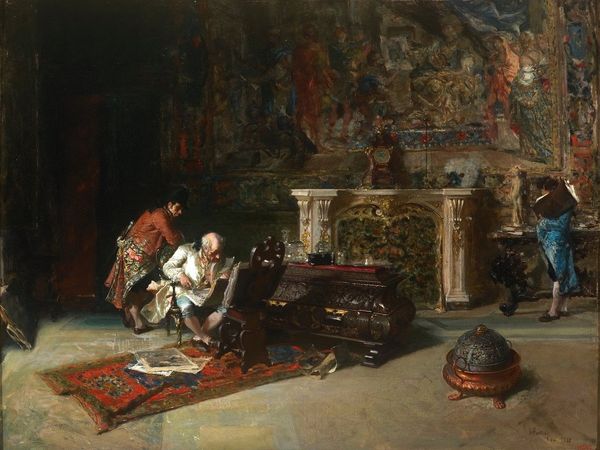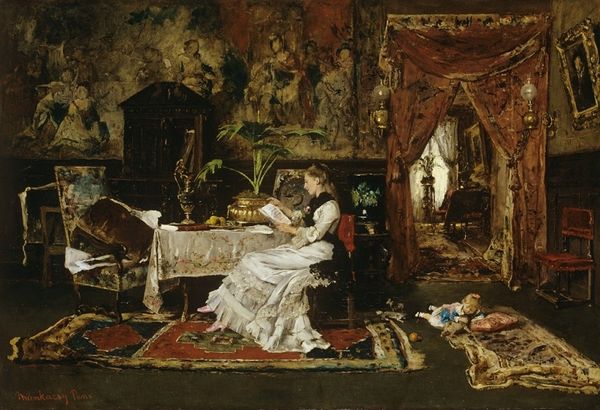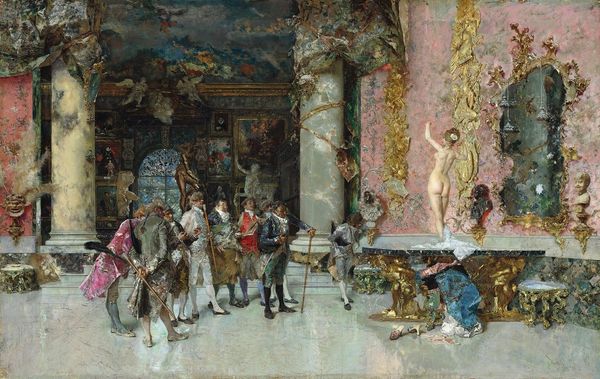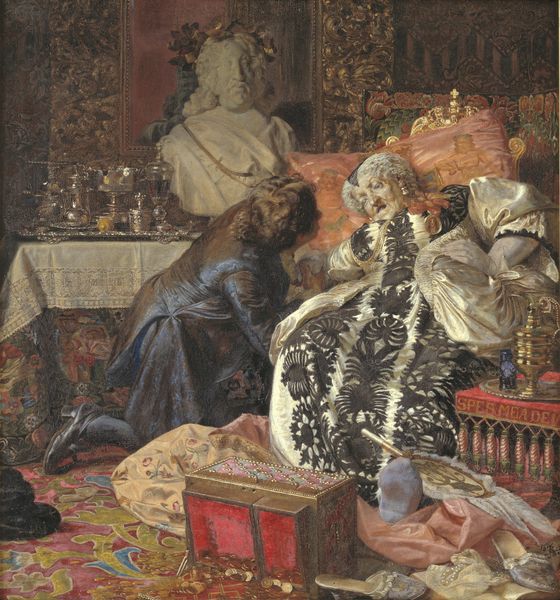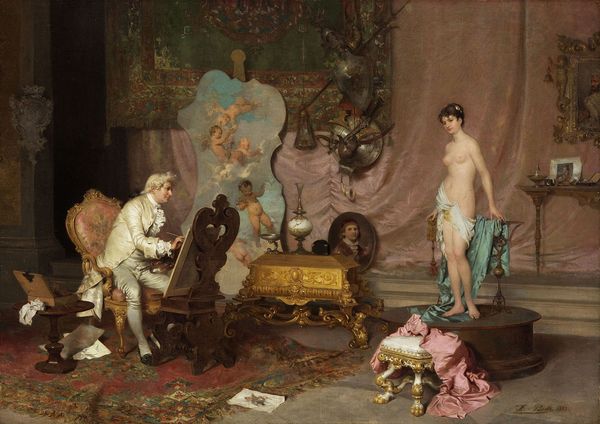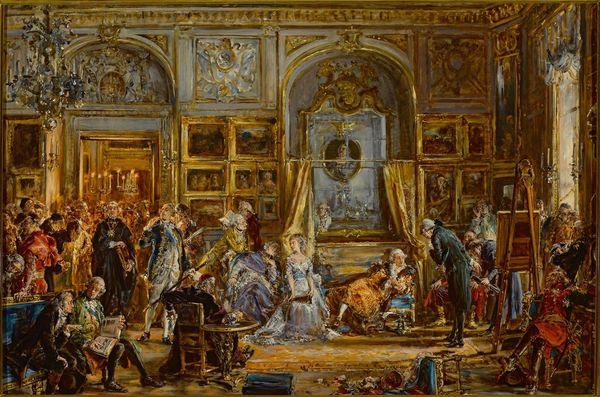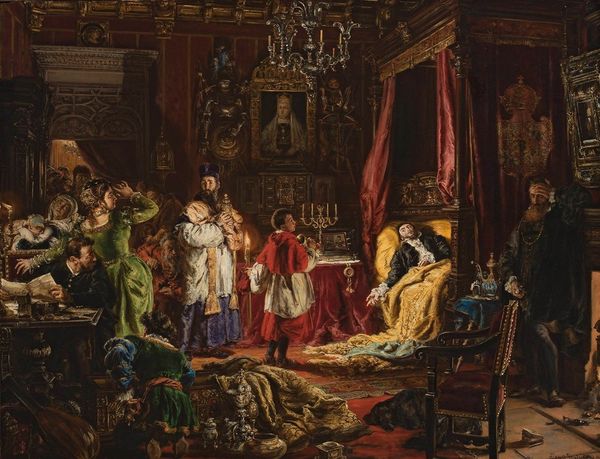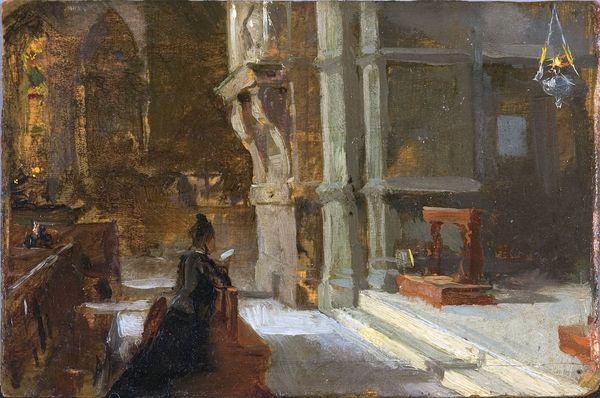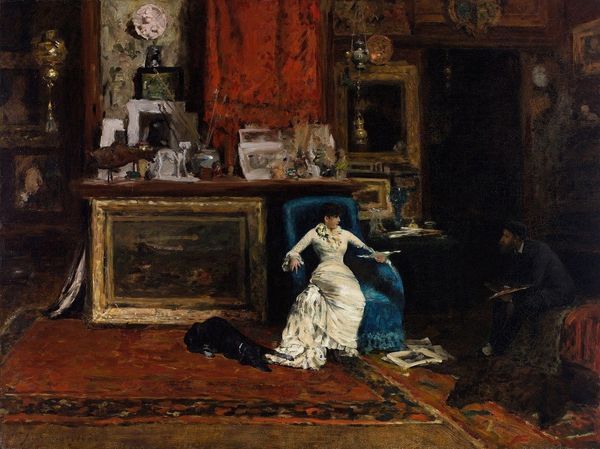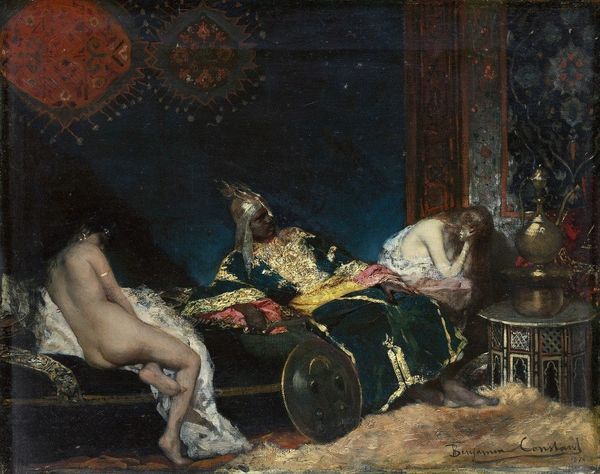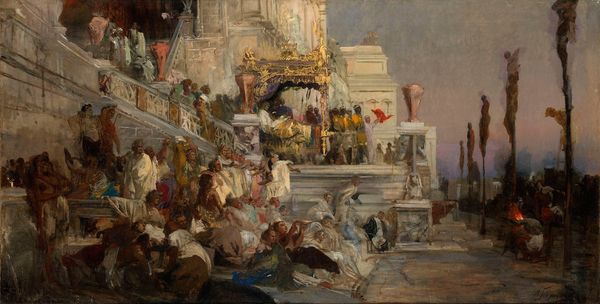
painting, oil-paint, impasto
#
portrait
#
painting
#
oil-paint
#
oil painting
#
impasto
#
intimism
#
genre-painting
#
history-painting
#
academic-art
#
realism
Copyright: Public domain
Curator: Look at this fascinating genre painting, "The Print Collector" by Mariano Fortuny, executed in oil on canvas around 1863. Editor: My first thought is… claustrophobia. The objects in this room press in; it's a depiction of extreme privilege, of being surrounded by too many possessions. Curator: Interesting. Notice how Fortuny layers symbols of wealth and power? There's a portrait of what appears to be a nobleman overlooking the scene. His gaze could almost be interpreted as judgmental. A suit of armour adds to the feeling of being in a repository of history. Editor: Exactly. I see layers of colonial exploitation reflected in those symbols of power, particularly when paired with the opulent interior. Where did this family derive their wealth, and what human cost was paid? The painting inadvertently exposes those power structures, right? Curator: It's difficult to look away from the men poring over the prints, though. Their close scrutiny suggests a quest for understanding, perhaps an attempt to capture beauty or knowledge, even if circumscribed by the social constraints of the era. And, given Fortuny’s interest in Japanese art, that suit of samurai armor is very suggestive. It could be commenting on cross-cultural influence, an attempt to adopt the perceived values and prestige of another civilization. Editor: An appropriation that erases context. Consider the racial dynamics—likely two white men are consuming images in an enclosed space made comfortable by an economic engine that disenfranchises and harms others. The closed nature of their study symbolizes the exclusivity and biases of intellectual life during this period. How could this knowledge ever be available to those it most affects? Curator: Yes, there is undeniable privilege at play. Yet, even within such contexts, doesn’t the simple act of appreciating prints open a space for connection across time? The aesthetic sensibility transcends, offering fleeting transcendence? Editor: Perhaps, but the act itself is not neutral; appreciation can quickly devolve into mere acquisition, devoid of social conscience. I wonder, are we, the audience, complicit in this cycle just by viewing this piece? Curator: An important provocation, one that acknowledges the ongoing complexity of historical paintings and how they participate in shaping and reflecting our cultural values. Editor: Agreed. By unpacking these layers, we gain perspective, which ideally sparks a greater willingness to reflect and to challenge inequalities wherever we encounter them, inside the museum and out.
Comments
No comments
Be the first to comment and join the conversation on the ultimate creative platform.
